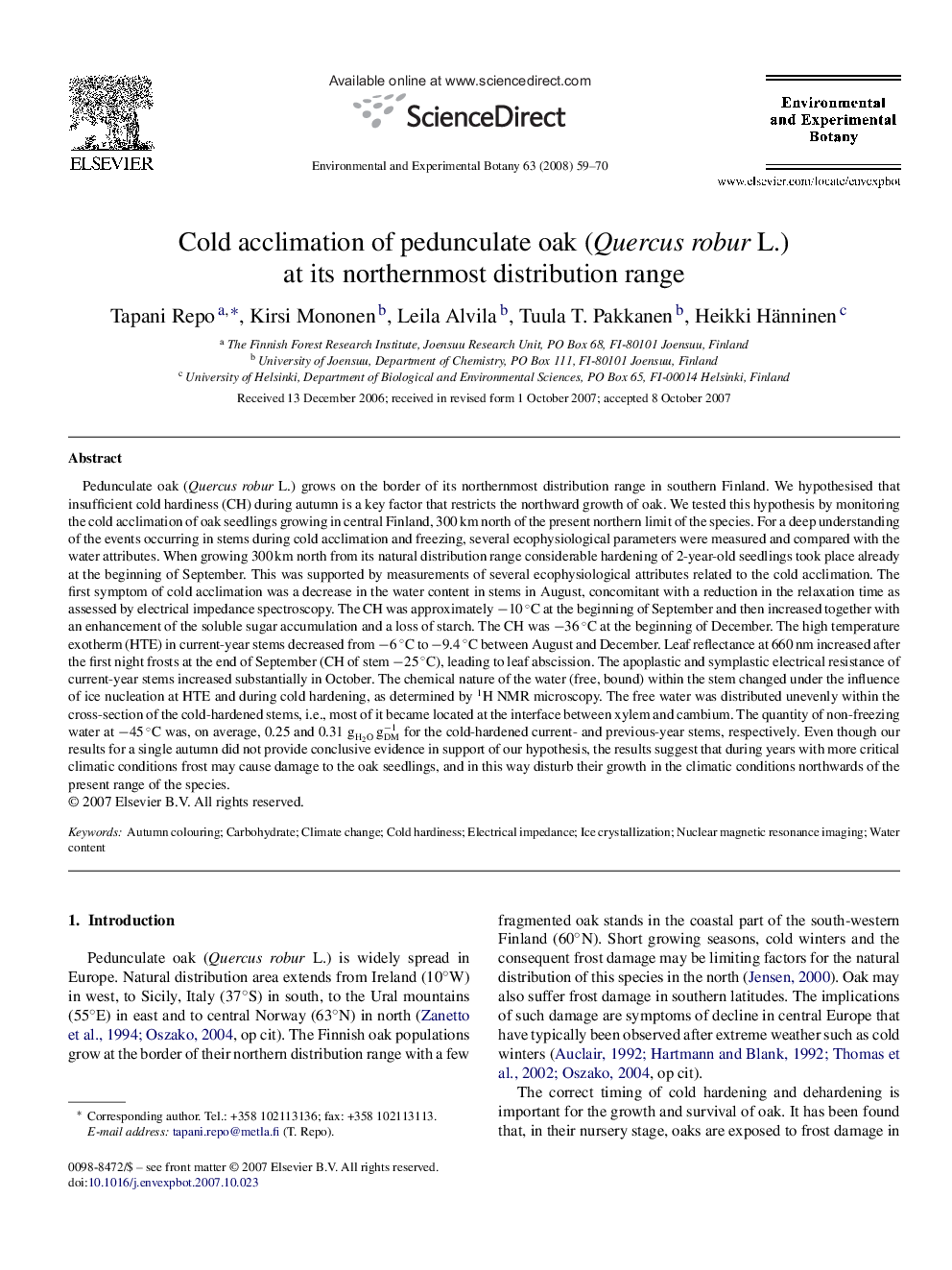| کد مقاله | کد نشریه | سال انتشار | مقاله انگلیسی | نسخه تمام متن |
|---|---|---|---|---|
| 4555277 | 1628107 | 2008 | 12 صفحه PDF | دانلود رایگان |

Pedunculate oak (Quercus robur L.) grows on the border of its northernmost distribution range in southern Finland. We hypothesised that insufficient cold hardiness (CH) during autumn is a key factor that restricts the northward growth of oak. We tested this hypothesis by monitoring the cold acclimation of oak seedlings growing in central Finland, 300 km north of the present northern limit of the species. For a deep understanding of the events occurring in stems during cold acclimation and freezing, several ecophysiological parameters were measured and compared with the water attributes. When growing 300 km north from its natural distribution range considerable hardening of 2-year-old seedlings took place already at the beginning of September. This was supported by measurements of several ecophysiological attributes related to the cold acclimation. The first symptom of cold acclimation was a decrease in the water content in stems in August, concomitant with a reduction in the relaxation time as assessed by electrical impedance spectroscopy. The CH was approximately −10 °C at the beginning of September and then increased together with an enhancement of the soluble sugar accumulation and a loss of starch. The CH was −36 °C at the beginning of December. The high temperature exotherm (HTE) in current-year stems decreased from −6 °C to −9.4 °C between August and December. Leaf reflectance at 660 nm increased after the first night frosts at the end of September (CH of stem −25 °C), leading to leaf abscission. The apoplastic and symplastic electrical resistance of current-year stems increased substantially in October. The chemical nature of the water (free, bound) within the stem changed under the influence of ice nucleation at HTE and during cold hardening, as determined by 1H NMR microscopy. The free water was distributed unevenly within the cross-section of the cold-hardened stems, i.e., most of it became located at the interface between xylem and cambium. The quantity of non-freezing water at −45 °C was, on average, 0.25 and 0.31 gH2O gDM−1 for the cold-hardened current- and previous-year stems, respectively. Even though our results for a single autumn did not provide conclusive evidence in support of our hypothesis, the results suggest that during years with more critical climatic conditions frost may cause damage to the oak seedlings, and in this way disturb their growth in the climatic conditions northwards of the present range of the species.
Journal: Environmental and Experimental Botany - Volume 63, Issues 1–3, May 2008, Pages 59–70